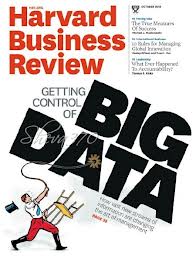Data Management in Divorce
 Every day I have clients contacting me regarding their divorce and property settlement. I approach these clients with a number of different ‘hats’. Before I dedicated myself to family law, I was (and still am) a data mining specialist mostly analysing large volumes of data from some of the largest corporations in Australia, New Zealand and the United States.
Every day I have clients contacting me regarding their divorce and property settlement. I approach these clients with a number of different ‘hats’. Before I dedicated myself to family law, I was (and still am) a data mining specialist mostly analysing large volumes of data from some of the largest corporations in Australia, New Zealand and the United States.
What strikes me as strange with family law matters is that I am often presented with boxes and boxes of printed documents. This includes bank statements, loan statements, credit card statements and many other schedules containing important data.
What I find unusual is that all this information would have originally been held in a financial institutions’ database. It is then printed, photocopied by the lawyers, submitted to the family court and then eventually provided to myself. Many lawyers when provided with electronic evidence such as bank statements will print these documents, file them in a folder and then refer to them in this format (and this is how the majority of Courts and Tribunals require evidence to be submitted). However it’s my opinion, that the approach adopted by litigants in relation to managing data in many instances either prolongs a dispute or is a fundamental reason that a property settlement goes to the expense of a final hearing.
So what can we do to prevent this from occurring? Increasingly I am having all the financial records to a family law property settlement be initially inputted into a spreadsheet (in a particular format, which can then be uploaded into a database) so that our primary means of analysing the information is undertaken on a computer (usually in Excel or Microsoft Access). Each document is is given a unique reference number and this number is printed on the actual document (or in the case of original documents, it is noted on the outside of a plastic sleeve and the original document is kept within the sleeve). When we enter the transaction into the spreadsheet or database, the unique reference number on the page is also entered and this document reference number is always added to any exports, queries or reports which are then submitted to the Court, if required.
 I have found that for nearly every client of mine that has taken this approach we realise that this methodology successfully takes account of the issue which was the reason for originally undertaking this data entry exercise but in nearly all cases, the ability to quickly analyse the information means that when an unrelated issue crops up during the litigation process, we have the data already organised in a way that means it is very easy to then run an additional query (often only taking less than a minute) which answers a question which would not have been solvable had we not inputted the data in this form.
I have found that for nearly every client of mine that has taken this approach we realise that this methodology successfully takes account of the issue which was the reason for originally undertaking this data entry exercise but in nearly all cases, the ability to quickly analyse the information means that when an unrelated issue crops up during the litigation process, we have the data already organised in a way that means it is very easy to then run an additional query (often only taking less than a minute) which answers a question which would not have been solvable had we not inputted the data in this form.
I wonder how many disputes could be settled and the time that could be saved if more divorce property settlements were approached in this way?
One of the common concerns of individuals in family law property proceedings is finding hidden assets. Again if we approach the data in the right way, we can quickly ascertain if there are sums of money that have been transferred from a “known” bank account to an “unknown” bank account. This is only possible if we have entered all the transactions of the parties into an electronic form and into a format that can be easily analysed.
What other sources of information do we simply print, stick in a folder and then refer to? One that comes to mind are the financial statements for a business. In many divorce / property settlements one party has an interest in a business and we are often called upon to provide an expert opinion as to the value of this interest. Again, having the financial statements of the business in an electronic form can make a significant improvement to how a divorce property settlement is managed.
In an unrelated inheritance dispute, I recall that simply by importing all the Balance Sheet and Profit and Loss Statements into a single spreadsheet, with each column representing a year of trading, it was possible to greatly reduce the complexity of the dispute and it allowed us to obtain the clarity of mind that was needed to properly assist the client.
So many parts of our lives are run from a database (we even manage our friendships through Facebook, which is held in a database). When it comes to the division of assets in a divorce property settlement, a well thought out approach to managing the data will provide tremendous benefits to the parties that are in dispute.

Rushmore (Author)
View Post